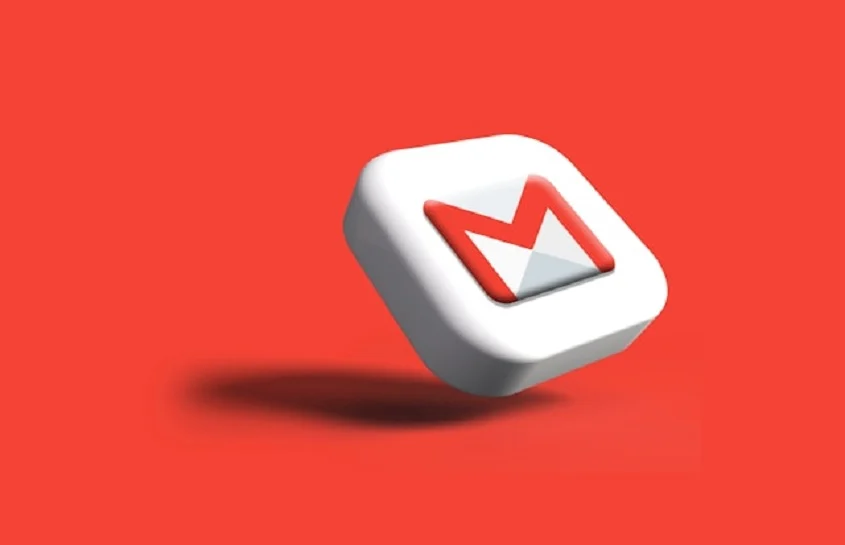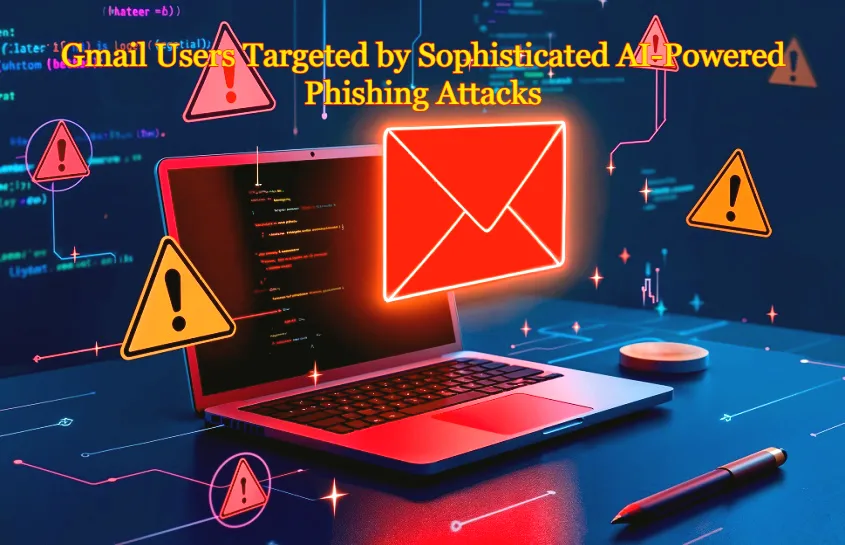It’s no longer the era of clumsy phishing scams with spelling mistakes and weird formatting. Today, attackers are using artificial intelligence to craft emails that look polished, personal, and terrifyingly real. Recently, headlines confirmed that Gmail users targeted by sophisticated AI-powered phishing attacks are falling victim to emails that look like genuine Google alerts.
The FBI warns Gmail users of sophisticated AI-driven phishing attacks because these scams are spreading fast, tricking even cautious people. For anyone who relies on Gmail for personal or professional use (which is most of us), this warning should be taken seriously.
Phishing is nothing new. But what makes these current scams so dangerous is the use of AI tools to generate convincing content. Instead of obvious spam, attackers are sending messages that:
- Mimic Google’s real formatting.
- Use correct grammar and natural language.
- Reference believable account activity.
The FBI warns Gmail users of sophisticated AI-driven scams impersonating Google, and this impersonation is what makes the attacks especially effective. Victims receive what appears to be a standard Google “security alert” or “password reset” email, but clicking the link takes them to a fake login page. Once they enter their details, hackers have everything they need.
- Massive user base – With over 2.5 billion active accounts, Gmail is a global giant. Targeting it gives attackers endless opportunities.
- High trust in Google – If an email says “Google Security Alert,” most people instantly believe it.
- Gateway account – A single Gmail login connects to Google Drive, Photos, bank accounts, and more. Losing it is like handing over the keys to your digital life.
That’s why Gmail sophisticated attacks phishing FBI investigations show Gmail as the prime target. Attackers know if they break into Gmail, they can access everything else.
Traditional phishing emails often had telltale signs: awkward wording, strange email addresses, or odd logos. Now, AI can generate flawless messages in seconds. The tone matches professional communication, the urgency feels real, and the details are frighteningly accurate.
For example, one report showed AI-generated emails telling users that unusual login attempts were detected in their account. The emails included a clickable “Secure Your Account” button. Everything—color, design, wording—looked authentic.
This is why Gmail users warned about sophisticated AI-driven phishing attacks are urged to double-check every link before clicking.
Here’s the step-by-step process behind these AI-powered phishing attempts:
- The Email Arrives – It looks like it’s from Google, often with a subject like “Unusual Sign-in Attempt Detected.”
- Creating Panic – The message claims your account will be suspended or locked unless you act immediately.
- The Fake Link – A button takes you to a cloned Gmail login page.
- The Capture – Once you enter your credentials, hackers instantly receive them.
- The Aftermath – Attackers lock you out, reset linked accounts, and sometimes even send phishing emails to your contacts.
This explains why the FBI warns Gmail users of sophisticated AI-driven phishing attacks as a matter of national cybersecurity concern.

The FBI rarely issues alerts unless the threat is widespread and dangerous. In this case, officials confirmed that Gmail users warned of highly sophisticated AI-powered phishing attacks are being tricked at an alarming rate.
What worries experts is that AI allows scammers to scale their operations. In the past, one scammer might send a few hundred emails. With AI, thousands of unique phishing emails can be generated daily, each customized enough to avoid detection by spam filters.
The FBI warns Gmail users of sophisticated AI-driven scams impersonating Google because Google branding is so trusted. When people see Google logos and security wording, they drop their guard.
A colleague of mine recently received an email saying her Gmail account was locked due to suspicious activity. The email subject was professional, the sender looked like a real Google support address, and the footer included all the right details.
She nearly clicked the “Restore Access” button. Fortunately, she paused, opened a new tab, and logged into Gmail directly. Her account was fine. That one pause saved her from giving away her login.
This story shows how dangerous these Gmail sophisticated attacks phishing FBI cases are. Even smart, cautious people can be tricked if they don’t take a moment to verify.
Check the steps to stay safe when received Google alert
1. Don’t Click Links in Emails
If you receive a suspicious Google alert, don’t click. Go to Gmail by typing the address directly into your browser.
2. Turn On Two-Factor Authentication
2FA adds an extra layer of protection. Even if hackers steal your password, they can’t log in without the second step.
3. Run Google Security Checkups
Google offers a built-in security tool that shows unfamiliar devices and logins. Use it monthly.
4. Learn to Spot Phishing Signs
Even AI-made scams sometimes slip up. Watch for:
- Emails urging immediate action.
- Odd sender domains.
- Requests for recovery codes or passwords.
5. Use Passkeys or Security Keys
Passkeys are harder to steal than traditional passwords. A physical security key or biometric login is your strongest defense.
Compromised Gmail doesn’t just mean losing emails. It often means losing access to banking apps, e-commerce accounts, and even personal files. Hackers can reset your PayPal, Amazon, or social media logins instantly once they control your email.
That’s why FBI warns Gmail users of sophisticated AI-driven phishing attacks with such urgency—because the risks extend far beyond your inbox.
The bottom line is clear: Gmail users warned of highly sophisticated AI-powered phishing attacks should take this seriously. These aren’t the old scams we used to laugh at. They’re sleek, convincing, and capable of fooling anyone who doesn’t pause to verify.
When the FBI warns Gmail users of sophisticated AI-driven phishing attacks, it’s because the threat is real, immediate, and dangerous. By enabling 2FA, avoiding suspicious links, and staying educated, you can protect yourself from becoming another statistic.
Stay cautious, because in today’s digital age, your best defense is awareness.
A: Yes. Multiple reports confirm Gmail users targeted by sophisticated AI-powered phishing attacks, making this a global threat.
A: Because the FBI warns Gmail users of sophisticated AI-driven phishing attacks that can steal personal and financial data on a massive scale.
A: By copying Gmail’s branding. The FBI warns Gmail users of sophisticated AI-driven scams impersonating Google because these look almost identical to real security alerts.
A: According to reports, cases are rising quickly. Spam filters catch many, but AI-generated emails are harder to block.
A: Enable two-factor authentication, don’t click suspicious links, and stay alert—because Gmail users warned about sophisticated AI-driven phishing attacks must take extra precautions.

